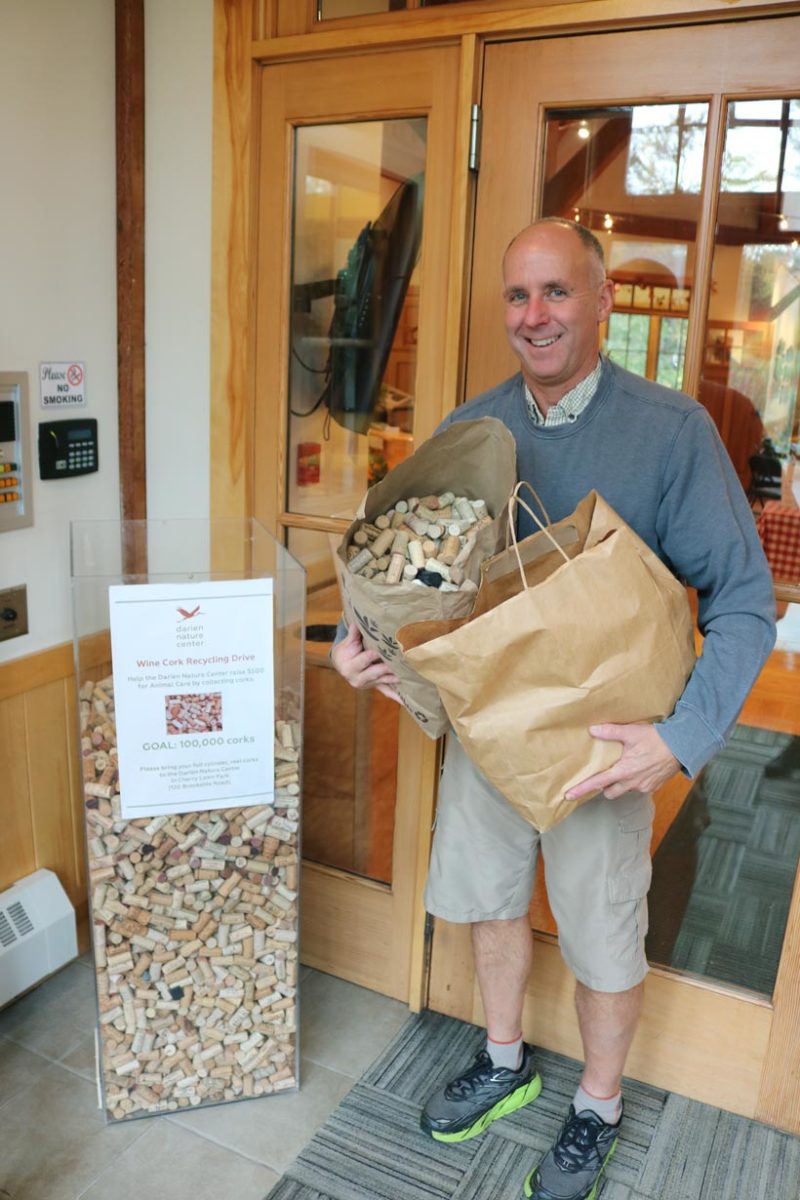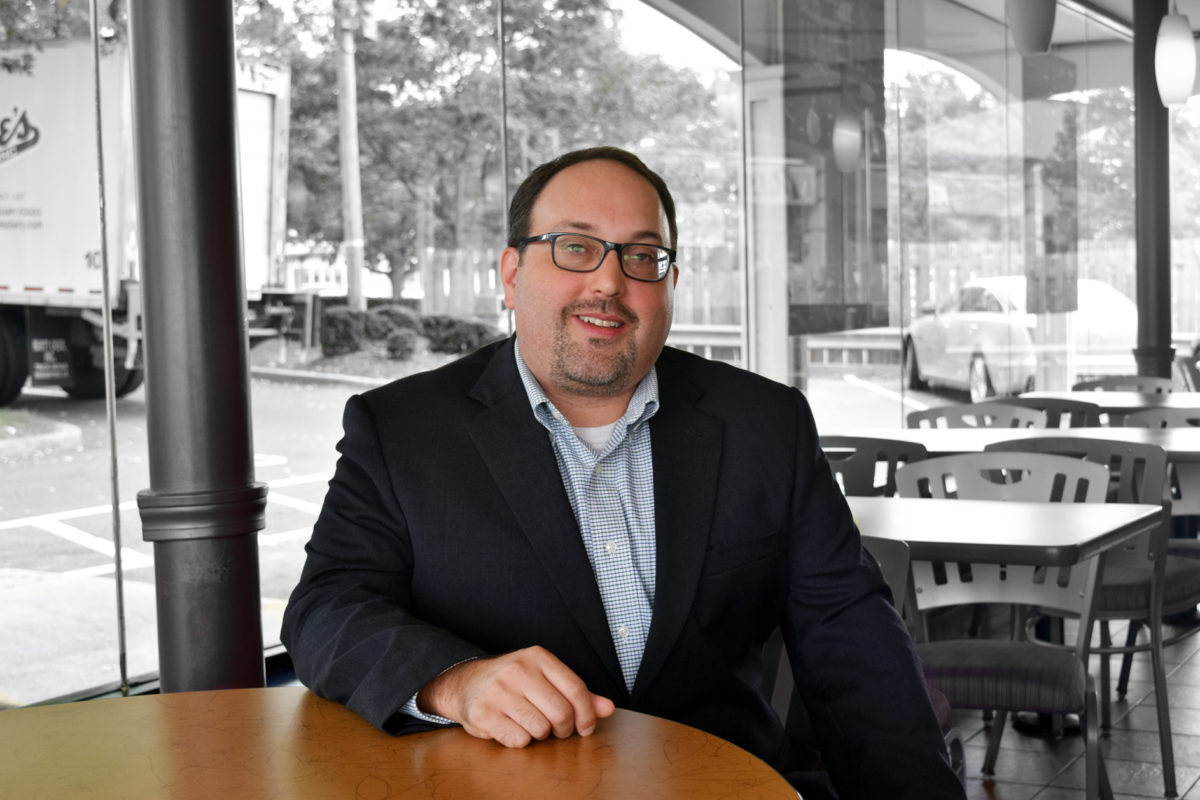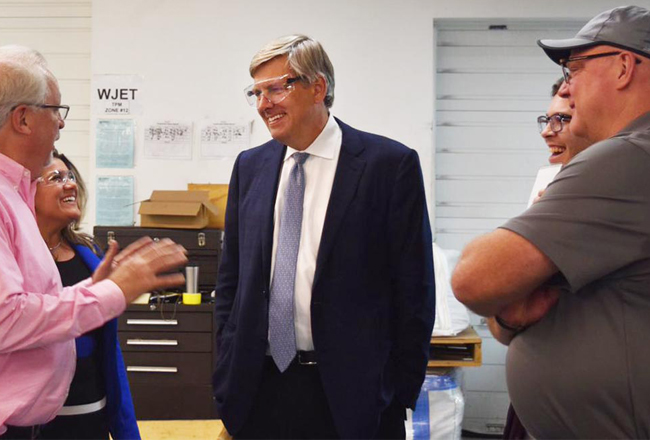Popping the cork on a bottle of wine can be a pleasant experience, whether it”™s in celebration, setting a mood or serving as the introduction to a meal. Once done, most oenophiles simply throw the cork away.
That is a mistake, according to the forces behind a campaign involving Fairway Wine & Spirits in Stamford and Pelham, the Darien Nature Center and the Cork Quality Council, which works with the Portuguese Cork Association (APCOR) to educate the public about cork”™s sustainability.
“I”™ve been doing this for 17 years,” said Fairway Director of Wine Angelo Martelli, “and before this I never realized the sustainability, the recyclability of cork.”

Peter Weber, executive director of the Cork Quality Council, a nonprofit in Forestville, California that represents about 80 percent of the cork sellers in the U.S., said that while many people ”” if they think about the issue at all ”” assume that cork trees are destroyed in the process of making the bottle-stoppers, that is not the case.
“The trees are not cut down,” Weber said. “Instead, the bark is carefully removed to harvest what becomes corks.”
Such trees are usually about 40 years old and harvesting takes place on each tree every nine to 10 years, he said. The process actually can help prolong a tree”™s life from just over 70 years to over 250 years, Weber added.
Another environmentally important aspect of the process is the fact that it provides important CO2 retention, which Weber said makes it a vital tool in combating climate change. In Portugal alone, the cork forest acts as a carbon sink for 4.8 million tons of CO2 each year, he said.
The council has worked with APCOR on a number of projects over the past several years, Weber said, including research and consumer outreach; last month they produced a series of TV ads extolling the use of cork and its sustainability in northern California”™s wine markets across Sonoma, Napa and Santa Rosa.
”˜We don”™t have a lot of money to mount big consumer campaigns ”” it”™s a big country,” Weber said. Instead, “we often work with winemakers and the trade on a smaller level to help educate consumers. Fairway is a great example of a supermarket with a forward-looking wine program.”
On Sept. 29, Fairway launched an educational campaign in its stores. The aim, Martelli said, is to teach customers about the relationship between wine and cork as well as its environmental benefits. Banners have been hung throughout the stores, along with “neck hangers” on select wines extolling the benefits of natural cork and recycling bins for used natural corks.
“Given that about 70 percent of the wine we sell has natural cork in it, we felt we were kind of missing the boat,” Martelli said. “With all the eco-consciousness going on today, we felt that explaining to our customers the benefits of cork was important.”
Wine-tastings will include disseminating such information about cork, he said, and Fairway will also provide giveaways to further underscore the message. “Hopefully this will be very exciting for our customers,” Martelli said.
Recycled cork can be used for a number of products: Flooring tiles, building insulation, automotive gaskets, sports equipment, soil conditioners and even shoes, Weber said.
The corks collected by Fairway will be donated to the Darien Nature Center, which has been collecting them for the past several years, according to Executive Director Leila Wetmore.
“Nina Miller, who”™s been an employee here for well over 20 years, was the one who brought cork”™s recyclability and sustainability to our attention,” Wetmore said. “We found a company in Missouri, Yemm & Hart, that gave us money for our cork” ”” roughly a half-cent per cork ”” “which they resold to the market to make other products.”
While Wetmore said “we had a very good relationship with them,” the firm recently terminated that program; she said the Nature Center is “close to” selecting another partner.
The money collected is used to support the approximately 40 animals the Nature Center has onsite. “It costs us over $40,000 a year to feed and nurture our animals, so (the funds raised from cork) is very important to us.”
The Nature Center has a large acrylic tub in its front hall for cork collection; it”™s emptied every couple of months, Wetmore said. The center has an annual target of about 100,000 corks.
Local business Wine Port also collects corks, which it donates to the center, she said.
“We also include information about cork recycling in our messaging, which reaches 5,000 people by email,” Wetmore added.
The supply would appear to be in no danger of slowing. According to a study conducted last year by APCOR and the Cork Quality Council, cork was regarded as a marker of “high” or “very high” quality wine by 97 percent of consumers. The survey also found that natural cork is the closure of choice for 91 percent of wine bought at a restaurant, 93 percent of wine purchased as a gift, and 86 percent wine purchased to bring to a dinner party.
Cork can also make for a better taste, according to both Weber and Martelli.
“It”™s definitely preferred by a lot of our customers,” Martelli said. “And the fact remains that the more cork we use, the more trees are planted. That”™s the kind of information we want our customers to have.”
As for how much wine Fairway sells, Martelli declined to provide specific figures.
“We”™re one of the largest wine sellers in Connecticut, so volume is high,” he said. “We”™re talking big, big numbers.”






















